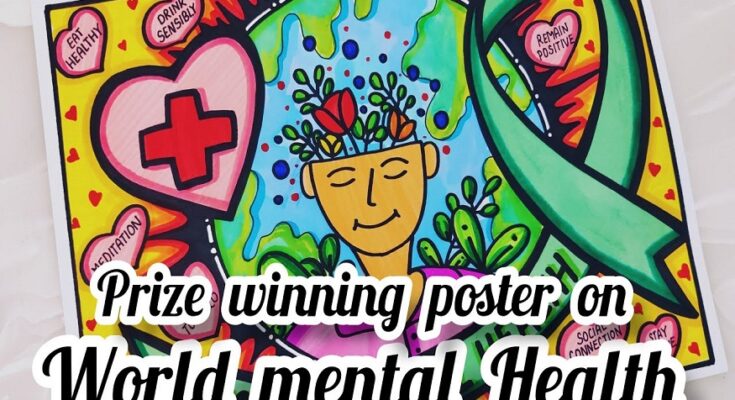Posters can be an effective way to raise mental health awareness, but only when they are done right. So, we’ll show you some effective strategies for creating educational posters for your community!
1. Pick Up A Template
Using a template is one effective way to kickstart your poster design process. There are a lot of tools online that come with a bunch of customizable design elements so you don’t have to start making anything from scratch. Not sure where to look for one? Visit PosterMyWall.com, where you can find an array of mental health poster templates with different themes and styles.
You may, however, become lost in the plethora of template options available. It is therefore important for you to always keep your design goal in mind. Depending on the purpose, you’ll need one type of design or another. For example, if you want passersby to notice your poster, it must have a large and bold headline with eye-catching colors and visuals to grab attention.
When deciding on the composition of the poster elements, you should also consider where they will be displayed. The viewer’s distance, for example, will have a significant impact on the poster’s composition. If possible, figure out the colors and lighting in the poster’s surrounding area to make the mental health awareness poster pop up.
2. Limit Your Color Options
Speaking of colors, it’s worth noting that they not only draw readers’ attention but also influence their behavior. Experts, for example, have concluded that colors such as orange, red, and yellow can evoke a sense of urgency, whereas blue and green are frequently used to instill rational consideration.
Using too many contrasting colors, however, can lead to confusion. Thus, it’s best to stick to a palette of three main colors in your mental health awareness poster and use relevant shades to add detail without making the poster appear cluttered. Your color palette should also help readers focus on the most important aspects of your poster.
Furthermore, it’s worth noting that colors can have distinct meanings across cultures. In the West, white is frequently associated with innocence. However, they represent grieving in some Asian cultures. Having said that, it is critical to understand the cultural associations of colors in the community you are targeting.
3. Be Careful with Typography
Choosing appropriate typography is crucial for posters, as they are mostly made up of text and imagery. Consider the billboards you see on your commute to work. They only have a little over three seconds to capture your attention, so how do they accomplish that? The answer is by using fewer than three different typefaces.
Again, as with adjusting your template, you must pay close attention to composition when creating the written content for your mental health poster. Make sure there isn’t too much text, the text embellishments aren’t distracting the readers, the background has a good contrast, and nothing else is interfering with readability.
One way to improve your poster’s composition is to ensure that the image and text complement each other. It may involve aligning your text to match a shape in the image. Another approach is to consider the composition in broader terms. Your images and texts can be arranged in a variety of ways, so feel free to unleash your creativity!
4. Proofread the Content
Mental health is a serious issue, so be serious about providing accurate information in your poster. You want to make sure that the information you are spreading is correct, and that the poster uses the appropriate language tone. When proofreading, don’t just mind the grammar but also the overall tone and approach. Mental health is a very sensitive and nuanced subject matter that requires more thought and empathy.
Check each line for accuracy. If needed, cover the remaining portions of the paragraph with white paper so you can only look at a single line at a time. You can also try reading your work aloud to catch lengthy phrases and other errors that you might miss if you only read the lines. Always aim for clarity, brevity, and impact.
The Takeaway
Mental health posters are a great way to drive awareness and understanding. They not only spark important conversations but may also inspire action relevant to the causes you support. After all, mental health is not only a personal matter but a collective responsibility.




